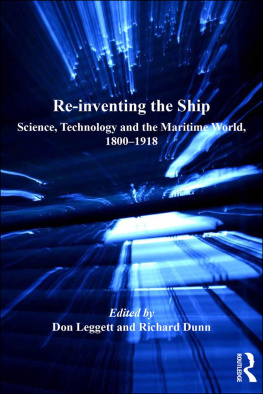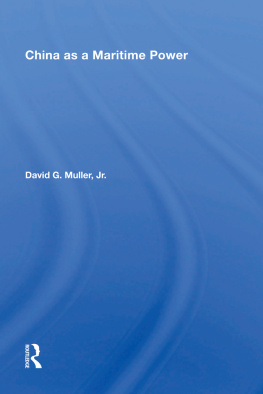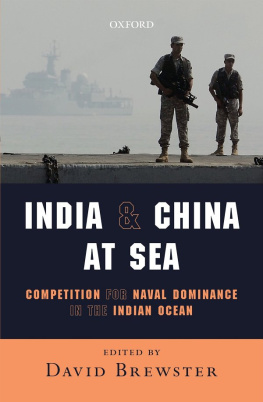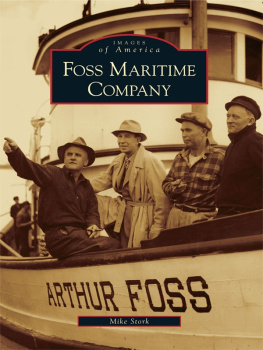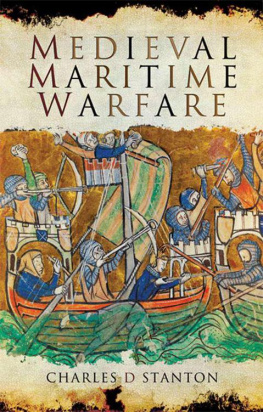Air Power in the Maritime
Environment
This book explores the mingling of two rather different perspectives, those of the naval and aeronautical schools of thought, and the impact that they had upon one another in natural, professional and geopolitical settings. To explain the manner in which air power was incorporated into warfare between 1914 and 1945 it studies the deeds of practitioners, the limitations of technology, the realities of combat and the varying institutional dynamics and strategic priorities of the major maritime powers. It is underpinned by an appreciation of the geostrategic setting of the key maritime states, while addressing the challenges of operating in this multifaceted environment and the major technological developments which enabled air power to play an ever greater role in the maritime sphere. The potential for air power to influence warfare in the maritime environment was fully realised during the Second World War and its impact is demonstrated through an analysis of a wide range of the fleet operations and how it was utilised in the defence of trade and sea lanes. As such this book will be of interest to both naval and air power historians and those wanting a fuller perspective on maritime strategy in this period.
Dr David Gates is a Fellow of the Royal Historical Society and the author of numerous publications on aspects of the history of war and on contemporary military matters. Among other distinctions, he has been awarded the Royal Air Forces Salmond Prize in Air Power Studies.
Dr Ben Jones is Senior Lecturer at Portsmouth Business School at the Royal Air Force College, Cranwell, UK.
Air Power in the Maritime
Environment
The World Wars
David Gates and Ben Jones
First published 2016
by Routledge
2 Park Square, Milton Park, Abingdon, Oxon OX14 4RN
and by Routledge
711 Third Avenue, New York, NY 10017
Routledge is an imprint of the Taylor & Francis Group, an informa business
2016 David Gates and Ben Jones
The right of David Gates and Ben Jones to be identified as authors of this work has been asserted by them in accordance with sections 77 and 78 of the Copyright, Designs and Patents Act 1988.
All rights reserved. No part of this book may be reprinted or reproduced or utilised in any form or by any electronic, mechanical, or other means, now known or hereafter invented, including photocopying and recording, or in any information storage or retrieval system, without permission in writing from the publishers.
Trademark notice: Product or corporate names may be trademarks or registered trademarks, and are used only for identification and explanation without intent to infringe.
British Library Cataloguing in Publication Data
A catalogue record for this book is available from the British Library
Library of Congress Cataloging-in-Publication Data
Names: Gates, David, author. | Jones, Ben, 1974 author.
Title: Air power in the maritime environment: the World Wars / by David Gates and Ben Jones.
Description: Burlington, VT : Ashgate Publishing Company, [2016] | Includes bibliographical references and index.
Identifiers: LCCN 2015038120
Subjects: LCSH: Air power History 20th century. | Naval aviation History 20th century. | World War, 19141918 Aerial operations. | World War, 19141918 Naval operations. | World War, 19391945 Aerial operations. | World War, 19391945 Naval operations.
Classification: LCC VG90. G38 2016 | DDC 358.4/0309041 dc23
LC record available at http://lccn.loc.gov/2015038120
ISBN: 978-1-409-42907-4 (hbk)
ISBN: 978-1-315-56630-6 (ebk)
Typeset in Bembo
by Apex CoVantage, LLC
Contents
AASF Advanced Air Striking Force
ASV Air-to-Surface-Vessel (radar)
ASW Anti-Submarine Warfare
BOA (US) Bureau of Aeronautics
BEF British Expeditionary Force
CAM Catapult Aircraft Merchantman
CDC (US) Caribbean Defense Command
CEP Circular Error Probable
CSBS Course Setting Bomb Sight
FAA Fleet Air Arm
FCS Fighter Catapult Ships
HF/DF High Frequency/Direction Finding
HMAS His Majestys Australian Ship
HMS His Majestys Ship
IJN Imperial Japanese Navy
MAC Merchant Aircraft Carrier
RAF Royal Air Force (British)
RAI Regia Aeronautica Italiana [Italian Royal Air Force]
RFC Royal Flying Corps
RMI Regia Marina Italiana [Italian Royal Navy]
RNAS Royal Naval Air Service
UK United Kingdom of Great Britain and Northern Ireland
UP Unrotated Projectile System
USAAF United States Army Air Forces
WAC (UK) Western Approaches Command
The maturation of aviation is a good illustration of how so much that occurs in battle can be moulded by developments and decisions that occur across broad swathes of time and space. As so many Europeans discovered or were reminded in the summer of 1914, military capabilities can take years and decades to evolve, yet political intentions can be transformed in a matter of hours and days. The specific manner in which air power was incorporated into warfare owed rather less to visionaries and theorists than it did to the deeds of practitioners, to the limitations of technology, to the realities of combat and to the varying institutional dynamics and often mutable strategic priorities of individual states, most notably Austria-Hungary, Britain, France, Germany, Italy, Japan, Russia, Turkey and the United States of America. As the title of this books opening section Where the Sea Meets the Sky suggests, this study explores the mingling of two rather different perspectives, those of the naval and aeronautical schools of thought, and the impact that they had upon one another in natural, professional and geopolitical settings that were often complex in the extreme.
In compiling this study we have drawn on a wide range of archival and secondary sources, many of which are novel items. We are particularly indebted to the staff of the Library of the Royal Air Force College, Cranwell, for their practical assistance in this respect.
David Gates
Ben Jones
Where the sea meets the sky
One of the attributes accredited to air power per se is the notion of ubiquity. Whereas the Earths surface comprises areas of water and dry land, the whole of the planet is covered by the atmosphere; in theory, there is no point that cannot be reached through the medium of the air. However, the ability of an aerial platform to attain a specific location in practice is a function of, above all, technology, as is its capacity to perform an allotted task once there. Moreover, another basic attribute of air power is the constraint known as impermanence, which largely stems from an ineluctable reliance on bases. Even space-going platforms cannot entirely slip the bonds that link them to activities on Earth, if only because it is from them that they derive their very reason for being. Aerospace power as such is ultimately and unavoidably reliant on surface installations and their concomitant personnel; without these, it could not exist, let alone operate.
The very fact that 70.7 per cent of the Earths surface consists of sea raises questions as to whether these supporting assets might best be located ashore or afloat. In any case, just as air power per se is reliant upon facilities and activities on the Earths surface, so too is naval power as such ultimately dependent upon installations and enterprises that are rooted in terra firma. As the British soldier and military theorist Charles Callwell observed in 1905:







